|
|
PMCC - Magazine 338 Friday 28th March 2025 |
|
Uncovering our past to preserve for the future
|
|
PMCC - Magazine 338 Friday 28th March 2025 |
|
|
Editor - Norman Woollons |
|
James Treversh - Design |
|
Click on article title |
Editorial | Police Medals and Awards | ||
| The Police Acts |
||||
| Help Wanted |
|
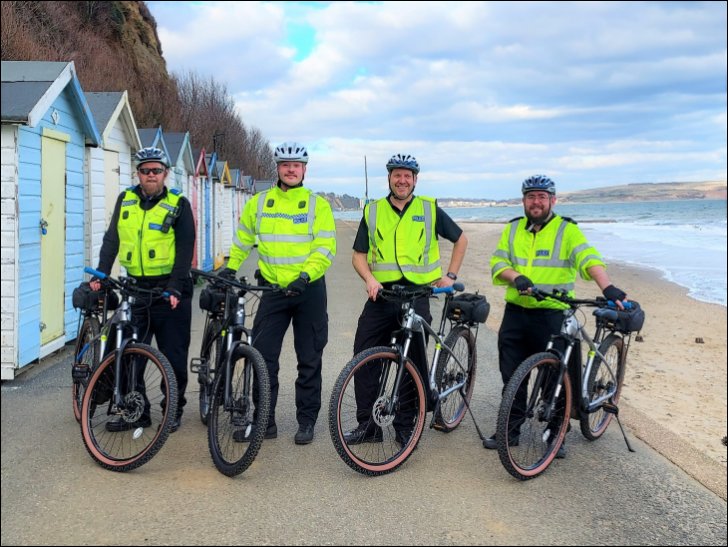
|
|
The Air Beat The Spring has Sprung... |
|
Easter is just three weeks away, so we are at the end of our winter hobbies season and the spring gardening season is just about to begin.
So what have you done during the long nights of winter?
I've been busy using my new book scanner, and working hard on the various Facebook police history groups.
The book scanner hardware is easy to use. The software much less so. It has a steep learning curve and I have found that it has some idiosyncrasies which I am still working through.
One result is the copy of the "Police Acts" which I have written about below and can be downloaded here too. People have many important documents which they have kept, or saved when they saw them being about to be destroyed.
Scanning documents is just one way of making sure that they are preserved for the future and for future police and social historians to use in their research.
If you have something which you have kept because it was import enough to save, there are many ways that you can have it scanned and make it available. Local libraries (where they still exist) often have scanners and local history centres certainly do. City and county archives are always looking for items which are linked to their local areas.
Then of course there are the various Facebook police history groups, like our PMCC Group where you can post material you have.
Don't lock memorabilia away, make it available for everyone to enjoy! Norman
|
|
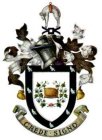
Rochdale Borough Police Established 13 April 1857 |
|
|
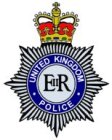
|
Police Medals and Awards |
|
Reigate Borough Good Service Medal
Date:
1913.
-o-O-o-
Renfrew Burgh Special Constabulary Medal
Date:
1919.
-o-O-o-
Rochdale County Borough Police Bravery Medal
3-pin buckle Brooch Date:
1928. -o-O-o-
Rochdale County Borough Police Long Service Medal (20 Years)
Scrolled pin brooch
Date:1930. -o-O-o-
Rochdale County Borough Police Long Service Medal (25 Years)
Scrolled pin brooch Date:
1930. -o-O-o-
Rochester Special Constabulary Long Service Medal
Date:
1919.
-o-O-o-
Saint Albans City Police Special Constabulary Long Service Badge
Date:
1914. -o-O-o-
Surrey Joint Special Constabulary World War 2 Service Medal
Date:
c1945.
-o-O-o-
|
|
What would you like to see? |
|
What would you like to see in the club magazine or on the website? Don't keep it to yourself. Let Norman or Jim know and we will do our best to publish your request. |
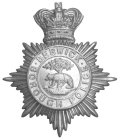
|
Researching Berwick Borough Police |
|
Welcome to new member Julia Gibbs. Julia is researching the history of Berwick Borough Police. Julia would be interested in any images officers or equipment relating to the Berwick Borough Force, they would be very much appreciated.
If any items came up for sale, the Museum could be interested of course.
If you can help Julia please email her: julie.gibbs1@outlook.com
|
|
Berwick Borough Police (Berwick-upon-Tweed) Established 1835 1 April 1921 Became part of Northumberland Constabulary |
|
|
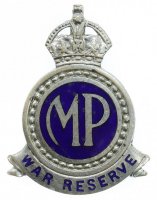
|
Police in the Second World War Peter Hinchliffe, 2024 |
||||
|
The 2024 celebrations of the D DAY landings of 1944 when the few surviving combatants were able to take part, lead to research at the Devon & Cornwall Force Museum to cover the activities of the police in the 1939 to 45 conflict.
In 1938 there were indications that a World War was going to happen. Despite Neville CHAMBERLAIN declaring that “there would be peace in our time” the government hoped to be ready, using lessons that had been learned from both the First War and more so, the Spanish civil war, when civilians and non combatants had been drawn into the action by suffering air raids. The authorities had made preparations to counter air raids by forming the Air Raid Precautions Corps which had been largely organised and trained by the police forces, with many policemen seconded for that purpose.
The government enacted the 1939 National Service Act, which required every man aged between 18 and 41 to register with the Ministry of Labour, all were subject to “Conscription” (compulsory enlistment for state service e.g. military service).(1) This Act created a category for workers in certain activities such as Police, Fire, Medical, Railways, Utilities etc, all were essential to keep the country functioning, this was known as “reserved occupation”. After September 1939 men in this category could not leave their job, they were not even allowed to volunteer for military service.
In the First War policemen who were military reservists were recalled to the colours, some younger constables volunteered for H M Forces, this left homeland police forces seriously depleted. In the early days of the Second war it soon became apparent that the strength of the police forces was insufficient to cope the increased demands made upon them, even with the support of the Police War Reserve Constables (PWRC) First Police Reserve (FPR) Women’s Auxiliary Police Service (WAPS) Police Auxiliary Messengers Service (PAMS) and the Special Constabulary, so in 1941 each police force was allowed to recruit an extra 5% of it’s pre-war establishment.
In December 1941 a second National Service Act was passed by the government, this extended the upper age limit for men to 51 years, it also required unmarried women aged under 31 years to register with the Ministry of Labour for National Service. One section of the Act dealt with conscientious objectors by declaring that there could be no objection to deployment in “Civil Defence” which included the police service. Other sections of the act permitted the Ministry of Labour to “direct” workers to essential industries. There are examples of police constables who were previously qualified tradesmen, being conscripted to work in their former trade in the Royal Naval Dockyards (2).
The scheme known as “Bevin Boys” (3) where men were conscripted between 1943 and 48 to work as coal miners, was also empowered under this act. A further section of the Act placed a compulsion on any man or woman in a reserved occupation to undertake further unpaid duty in “civil defence” such as Special Constabulary, A R P, Fire Watching, Home Guard, W V S, etc.
The Special Constabulary is of course the oldest form of reserve the police have had, it’s origins pre-date the professional force. The “Specials” played a significant role in the Second World War, when their number reached almost 130,000 men, many of whom were employed on a full time basis. (Women could not join the Specials until 1949) One hundred and seventy one Special Constables were killed during the war by air raids. Cornwall had 974 Special Constables in 1945(4).
First Police Reserve (FPR) Was in existence in 1939 but I cannot establish a date of it’s formation. The reserve usually consisted of recently retired constables and was maintained at a strength of 10% of the regular force. In 1939 Chief Constables were instructed to mobilise all available men in the reserve together with other retired policemen living in their area (often from different police forces) who were prepared to serve. There is evidence that they called out men who were “well past their prime”. Early in the war there are examples of men leaving the service. (8) The amount of payment to the FPR was a local arrangement at first, but later became a national pay policy. Plymouth City police recalled 91 men whilst Cornwall used 39 men, we have no figures for Devon or Exeter City.
Devon PWRC at Exmouth, circa 1939
WRPC Victor HUTCHINGS of Exeter City Police was awarded the George Medal in 1942 for rescuing 5 people from a bombed house (7)
One man PWRC Richard SQUIRE joined Tiverton Borough Police in 1941, he served in Devon & Cornwall Constabulary until September 1967, when he became 60. He was the longest serving of the PWRC in the Devon & Cornwall Forces.
After the war ended in 1945 men were allowed to change occupation and many left the PWRC. There are examples of men filling vacancies within the police service due to natural wastage, in 1947 seven PWRC in Cornwall became members of the regular constabulary. Exeter City police ran the ambulance service pre N H S, some of their men were transferred to become Ambulance crew to fill vacancies.
In August 1939 Chief Constables were allowed to recruit women to the Women’s Auxiliary Police Service (WAPC) some were full time and paid, others were part time volunteers. On 22nd., August, 1941 the CC Cornwall told the Standing Joint Committee that he could see no need for women in in the police force. BUT by 1944 there were 28 members of WAPS serving in Cornwall, probably at the insistence of the Home Office. The CC of Devon did employ a few women before receiving instruction from the Home Office in August 1944 to recruit a total of 18 women, all of them to be attested (sworn in as constables) When he remonstrated telling the Home Office of his difficulty in finding the required women, he was advised to get conscripts from the Ministry of Labour. (12 )
Members of WAPS were used in a great variety of roles, Clerical support, police matrons, motor vehicle drivers, etc. Some went on secondment to the Isle of Man to assist with the detention of “wartime detainees”.
Plymouth, Women’s Auxiliary Police Service Demob parade 1945
With the start of bombing raids in 1940 boys as young as 15 were recruited to the Police Auxiliary Messenger Service (PAMS) to assist with communications. These were mainly volunteers, although some forces like Devon Constabulary paid the boys and employed them full time (16) Most forces, like Tiverton Borough, supplied them with uniforms(17) Six of the boys were killed in air raids whilst on active service (18)
In March 1943 the Allies started planning for the invasion of occupied
Europe, it was realised that the civil establishment in the occupied
countries would no longer exist when the Nazi forces were defeated,
“The Civil Affairs Department” (18) was established, it included all
the various activities undertaken by local government and other bodies
such as health, education, trade unions and etc. Policemen were
recruited and a training centre established at Peel House by the
Metropolitan Police. Men from the forces in Devon & Cornwall
attended and were subsequently seconded after the D Day Landings in
June, 1944. This became the Allied Control Commission.
All references which include “PA” relate to the Police Archive in the
South West Heritage Trust Catalogue, at Greatmoor House, Exeter
|
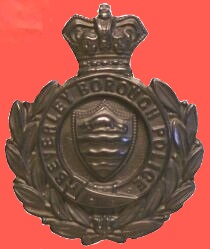
|
PC William Appleton Beverley Borough Police |
|
One of my favourite items is a Beverley Borough Police brass Kepi badge. At the time this was worn, the police also wore brass collar emblems with the Beaver prominent and brass buttons.
Only the buttons show any sign of having been polished. The River Hull which runs to the east of the town was home to Beavers before they were hunted to extinction in the late 12th Century.
Beverley was an inland port, with a number of ship yards. The Beverley Beck runs almost a mile from Flemingate to the River Hull and can take boats which are 20 metres long and 5.5 metres wide.
Literally hundreds of trawlers have been built at Beverley shipyards, then floated down the River Hull to the Humber Estuary. The Beck has a long history (https://en.wikipedia.org/wiki/Beverley_Beck) and the wharfs and buildings at its western end were very close to the centre of the borough.
William Appleton joined the Beverley Borough Police in November 1876, although we don't know what his collar number was. At that time the Head Constable was Henry Knight (HC 1870 - 1877). At that time the force strength was eleven men for a population of 10,218.
This studio photograph is of PC 7, a Beverley Borough Constable from c.1860
William was
born in 1856 at 12 Market Place, Market Weighton to Thomas and Mary
Appleton. His father's occupation is given as a Grocer and Draper. At
some point the family moved to Beverley because in the 1871 Census he
was living with his siblings at a house in Wednesday Market, Beverley,
aged 13. At 01:45
William was missed from his beat when he should have been at a
conference point with Sergeant Tomlinson. The Sergeant and other
officers began a search for him. Despite an extensive search, all
around his beat, which included the Beck, he could not be found.
He was in full uniform and his cape was wrapped around his head. His body was taken to the Beck Office where it was examined by Dr. Stephenson.
As was the custom in those far off days, the inquest before the Beverley Coroner, Mr J. M. Jennings was held at the Fleece Inn, Beckside, on the evening of Thursday 8th March. The Coroners Jury first viewed PC Appleton's body before hearing evidence from witnesses.
Sergeant Tomlinson said that PC Apletton's watch had stopped at 01:33. He still had his gloves and duty armlet on, when he was found.
The Sergeant said that the night had been very stormy, it "was blowing a hurricane with snow and rain falling". He also said that the Cartway to the north of the Beck, now called Beckside, was part of PC Tomlinson's beat where he would have patrolled and the beck at this point was unprotected.
The inquest also heard evidence that in very stormy weather it was common for policemen's capes to be blown up over their heads.
Doctor Stephenson told the inquest that there were no marks or bruises on PC Tomlinson's body, indicating any kind of violence and he gave the cause of death as "drowning" and that his heavy clothing "would have mitigated against any attempt he made to save himself".
In the report of the inquest there is no mention of whether William could swim. However wearing heavy clothing and with a bitterly cold water temperature, that was probably a moot point.
The coroner remarked that there was much evidence that William was a conscientious young officer. He had celebrated his 21st birthday just the month before. He was not known to drink and his sobriety was not in question.
The Jury returned a verdict of "found drowned".
William's funeral took place the following afternoon, Friday the 9th March. The cortege left from William's uncle's home in Well Lane, He was Mr. Mr James Campey. Six Constables acted as bearers and Sergeant's Tate and Tomlinson followed. He was buried at St. John's Churchyard, Beverley.
At the time of his death, William was living in Flemingate. The Watch Committee authorised the payment of £5 to William's father as a gratuity (about £750 in 2025) and a collection was taken up to pay for the cost of internment.
148 years after, we know more of the death of PC William Appleton, than we know about his life...
The Streetview photograph is of what was the "Cartway" in 1877, looking across to where the Beck Toll Office was in those days.
|
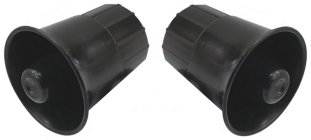
|
Audible Warnings |
|
Every so often I am asked a question which really makes me think about the history behind how policing in the British Isles has developed.
The question came from a member of our Facebook group in washington DC. He has just purchased a former Liverpool and Bootle Constabulary Austin Mini Cooper 'S' Mk II.
There will be some reading this who do not know what an icon the "Mini Cooper" marque of cars were, more who didn't realise that a number of British forces purchased them for their urban Road Traffic Departments and more still who didn't realise a few still exist, in the hands of enthusiasts.
Many will remember the MkII and Mk III Mini 850cc saloons, however the Mini Cooper 'S' was a 1275cc racing car, in a class of its own.
The history of the police Mini Cooper's proably deserves an article all of its own, but I digress....
The question that was posted to me was "What is the correct tone of the iconing 2-tone air horns?" (they were mounted on the outside of the roof box) and would some "German 2-tones work". He has already restored a German Polizei VW Beetle and has a spare set.
Amongst my micellany of police ephemera, I have some audible warning instruments. Things like the Winkworth electric bells, FIAMM 2-tone air horns, a "Pinky & Perky" siren, and some of the varying air horns which have addorned police BMW motorcycles etc.
It all goes back to the days of the police fire brigades.
At the end of the 19th century, horse drawn steam fire appliances were increasingly being used to respond to reports of fire. Long before the Great Fire of London, which began on 2nd September 1666, fire had been one of the greatest risks posed to British towns and cities. We covered the history of fire fighting and police fire brigades in magazines 313,315 and 317, available in the club magazine archive.
A Church bell would be rung to sound the start of the daily "curfew", the end of fire. The bell would also be rung to summon help in case of a fire breaking out.
All the early fire appliances, especially those produced by companies like Merryweather & Sons in Clapham, London, came fitted with a large brass bell so that when answering a call to a fire, the officer in charge could ring it to warn other road users that the steam fire engine was approaching.
This was a kinder, gentler period, however when you watch this YouTube
video of the Dublin Metropolitan Fire Brigade and some police officers,
you can see why a bell might be of some use.
The early motorised police fire engines continued the tradition of hand rung bells on the left of the appliance, even though cars had been fitted with Klaxon horns for some years.
By the end of the reign of Queen Victoria, the man with the red flag no longer had to walk in front of motorised vehicles to warn other road users of their approach and the number of motor vehicles on the road was increasing. A "horn" had been recognised as an effective means of warning other road users of the approach of a motorised vehicle. Once cars had accumulators fitted, electric horns gave way to the bulb horn.
The Motor Car Act of 1903 required the registration of all motor vehicles from 1st January 1904 and whilst some Chief Constables were early adopters, the registration AJ 1, was issued to the Chief Constable of the North Riding Constabulary and AB 1, the Chief Constable of Worcestershire. No doubt there were others too, but these vehicles were not for patrol.
Although a March 1914 General Order from Chief Constable Major R L Bower about the introduction of police Bloodhound, search dogs states that once requested, the police dogs will "arrive by motor car". There is no detail of the car though?
Winkworth is a famous maker of electric bells and their website says that in 1921, After returning to the UK from an inspiring trip in America, the company received funding for bell production. Winkworth Electric Car Bells Ltd. created police, ambulance, Army Land Rover, even gold-plated and private vehicle bells during their heyday."
I am unable to find a single photograph of any police car pre WWII with a bell, but that of course does not mean they don't exist. This is a 1934 Lancashire Constabulary Hornet motor patrol car.
I do have a photograph from 1939 or a Metropolitan Police car fitted with an Air Raid Siren, as part of the WWII Air Raid Precaustions.
UK Legislation
Regulation 37 of the Road Vehicles (Construction and Use) Regulations 1986 (as amended) is the current UK legislation governing the fitting and use of audible warning instruments on motor vehicles.
Sub-section 4 states: "Subject to paragraphs (5), (6) and (7) no motor vehicle shall be fitted with a bell, gong, siren or two-tone horn."
It then goes on to list all the exceptions in paragraphs 5, 6 and 7 and of course police vehicles are one. Interestingly, there is no exception or exemption for a privately owned, preserved or replica police vehicle to have an emergency warning instrument.
Here are some photographs of recent vehicles fitted with various emergency audible warning devices.
Lancashire Constabulary motorway equipment van with air horns on the roof sign
Leicestershire and Rutland Constabulary BSA Gold Star patrol motorcycle, fitted with a siren above the rear wheel.
The famous Dunbartonshire Constabulary twins, "Pinky and Perky" Hillman Imps with the siren in the centre of the bonnet.
A Thames Valley Police Rover with an early light bar and BOSCH electric horns.
A 1963 Nottingham City Standard Ensign car with a siren in the centre of the radiator.
A Central Motorway Policing Group Rover with a siren over the mirror
The European dimension
In Europe, countries have their own regulations and laws which govern the actual tone or key of the horns - because is it mostly horns, not sirens - that are used.
Most helpfully, the FIAMM company, who are still the largest producer in the world of emergency service pneumatic horns lists the different frequencies of horns supplied to different countries.
Although there is nowhere in UK legislation where particular tone is required, the UK two tone horns work on the alternating 440Hz and 494Hz frequencies.
There is actually a physiological reason for this. It is is just outside the normal audible range of the human ear and slightly above the "comfortable" range in decibels. So the sound attracts the attention of the brain. (marked in red).
Belgium 440Hz and 494Hz (The same as the UK) France` 435Hz and 580Hz Germany 392Hz and 523Hz Italy 466Hz and 622Hz Spain 466Hz and 544Hz
So that is why emergency vehicles in Europe sound different.
Two true events to conclude with...
Around 1985 I was involved in evaluating the "new" roof light bars and sirens, against BRITTAX revolving beacons and two-tone horns on Traffic cars.
With the assistance of British Aerospace at Brough and the local
Environmental Health Department, we did some side by side trials of the
two systems. A 250 Watt siren with a directional speaker, was
shown to have superior noise penetration to the venerable two-tone
horns.
The engineer retested because it was a rotating reflector directing the light output, not two different bulbs.
The most badly damaged blue domes on traffic cars were replaced. o0o
After receiving
a car with a light bar system at my traffic section, the divisional
Superintendent bounced into my office one morning, with steam coming out of
his ears. "I've just seen one of your cars B...dy go up Boothferry Road with its siren on, scattering people as it went!"
He exploded.
|
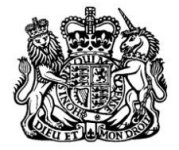
|
The Police Acts |
|
Unless you have been in one of a limited number of professions, you will probably never have come across an "Act of Parliament".
Only the legal profession regularly uses Acts of Parliament, and even then they tend to use various books which contain printed copies of Acts and Sections, rather than an original source document.
Today, there are on-line resources which provide Acts and Sections,
legal precedents and much more. However this didn't use to be the case.
Moriarty
wrote several books and papers on police procedures, notably Moriarty's
Police Law (1929), which for more than half a century was a fundamental
resource for law enforcement officials in the UK. These are now "Collectibles" in their own right.
Acts of Parliament are quoted verbatim, but the actual Act, is not shown. So although legal professionals will be well aware of Acts of Parliament, and often their limitations, very few will have ever seen an actual "Act".
For centuries "Acts of Parliament" have been written on vellum. This is the specially prepared skin of a calf which has been used for writing, because it is more permanent that parchment or paper. Vellum can also be printed on.
Acts of Parliament come in three varieties. Some are "permissive", allowing or giving permission for something to take place. For example Acts which allowed railways to be built across the UK in the 19th century and HS2 in the 21st Century.
Then there are the "preventative" acts, which make some act or omission against the law, with a penalty or punishment for failing to comply. These are grouped under the broad term of the "Criminal Law".
The third kind of legislation published by Parliament as Acts, are those which direct or prescribe a course of action which must be taken.
The various "Police Acts" of the 19th century, began with the Metropolitan Police Act of 1829. This Act of Parliament, authored by the then Home Secretary Sir Robert Peel, of course only applied to London.
The Municipal Corporations Act of 1835 required all incorporated boroughs in England and Wales to establish a police force, under the control of a "Watch Committee". However areas outside incorporated borough boundaries, were still mostly without a professional police force, with police services still being provided by the Parish Constables.
It would be ten years before the 1839 Police Act laid the ground work for county police forces, however this act was still permissive, allowing the Quarter Sessions Committee's of counties to appoint Chief Constables, Superintending Constables and of course Constables.
Signed into law on 27th August 1839, several county's Justices in Quarter Sessions moved quickly to write to one of Her Majesty's Principal Secretaries of State with how many Constables they needed.
Having received confirmation from the Secretary of State, the Justices then appointed a Chief Constable, under Section IV of the act.
The first Chief Constable appointed was Richard Reader Harris Esq., Chief Constable of Worcestershire, in November 1839. He was followed by Chief Constables being appointed for Gloucestershire, Lancashire, Leicestershire, Durham and Wiltshire, all in December 1839.
Section III allowed the Clerk of the Peace in any county, or any Division of a country to apply for a variation or special circumstances of the appointment of Constables.
So we see that on January 9th 1840, that Ralph Leconby Snowdon Esq, was appointed as the Chief Superintendent of the York Constabulary Force, for the Division of Gilling West, in the North Riding.
From the Police and Constabulary List 1844 He had a force of one sergeant, 38 Constables and a mounted officer to police what would in 1856 become a division of the North Riding Constabulary.
This was the area of the North Riding between Richmond and the Great North Road, and what we now know as the A66, then a main east - west route between Penrith and Scotch Corner, then west into the Yorkshire Dales as far as the Lancashire border.
In similar fashion, the Derwent Division in Cumberland, the Kingston Division of Herefordshire and the Hundred of Knightlow formed forces.
There were gradual increases in the number of county constabularies, however the government grew impatient with progress and it was the 1856 Police Act with required all Justices Quarter Sessions Committees to establish functioning constabulary forces.
Because the cost of policing was an issue, and a reason why some
counties had not formed a force, the 1856 Act introduced a Government
Grant of 51% of the cost of policing (previously the entire cost had
fallen on local inhabitants) and at the same time, the introduction of
Inspectors of Constabulary, who would have to inspect and confirm
forces were efficient and effective, before the grant was paid.
Often Parliament would add other provisions into an act, for example the Police and Criminal Evidence Act, 1984.
Probably these will also become collectibles some day.... Almost 200 years on, there are elements of the Metropolitan Police Act 1829, which still provide the backbone to the way Constables operate in 2025 - A Constable is a citizen, locally appointed, but having authority under the Crown, for the protection of life and property, the prevention of crime and the prosecution of offenders against the Peace.....
|

|
New "Tudor Crown" badges |
|
Some more new "Tudor Crown" badges, some with the CIIR Royal Cypher have recently been issued.
The West Midlands Police have begun to issue helmet plates with the CIIR centre, with a really nice highly polished chrome Brunswick Star.
Thames Valley Police have also issued Tudor Crown helmet plates, retaining their heraldic Coat of Arms centre shield.
Northumbria Police have also issued Tudor Crown helmet plates, retaining their heraldic Coat of Arms centre shield.
|

|
Help wanted |
|
Our FB group member Michael Prevezer is trying to identify the officer in this photo and his force.
The photo was purchased in Scotland, although by no means does it mean it is a Scottish force, and appears to be from the Edwardian era.
Sadly the focus is on the richly decorated sleeve cuff, so the cap badge is out of focus. It is a Coat of Arms, without a crown and the uniform suggests a Chief Constable.
Using the power of Photoshop on the cap badge does not reveal very much more detail. It is too out of focus.
|

|
Photo gallery (click on photograph to enlarge) |
|
Lincolnshire Police, Mablethorpe Beach, January 2025. Photograph: Facebook
Exeter City Police, who were also the 'out of hours' Ambulance Service, 1935. Being inspected by St John’s Ambulance Commissioners. Photograph submitted by Peter Hinchliffe. (Museum of Policing, Devon & Cornwall).
Walsall Borough Police, early 1960's: Photograph: Paul Reeves (Facebook)
Send your photos to Jim admin@pmcc-club.co.uk |
![]()
|
In this issue we feature Avon & Somerset Constabulary (Part 2) By Brian Homans |
|
|
Peugeot 405. Photograph: The Late John Oliver
Range Rover A72RHW
Range Rover V756EAE. Photograph: Alex Watson
Rover 827. Photograph: The Late John Oliver
Rover SD1
Senator M859AWS from PMCC
Stonefield 6x6 Underwater Search Unit. Photograph: Brian Homans
Volvo 850 P795 THY
Volvo 940 Turbo. Photograph: Andrew Fenton.
VW Vento VR6 L75 HNV and Vauxhall Senator M855 AWS
Ford Sierra XR4x4. Photograph: Brian Homans
|
|
Finishing off with some humour from Pam's postcards . . . . . .
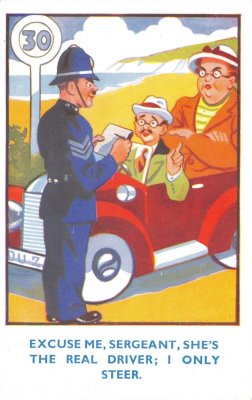
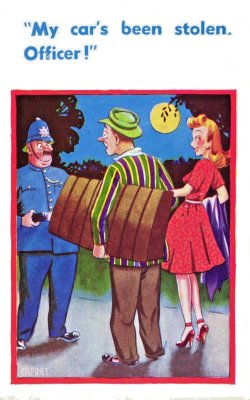
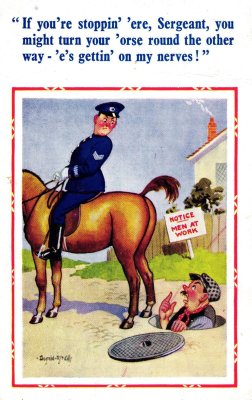

Hover your mouse pointer over a postcard to enlarge it
|
WANTED |
|
Your news, views, stories, pictures from your collection. Any item that you think will be of interest to other collectors. |
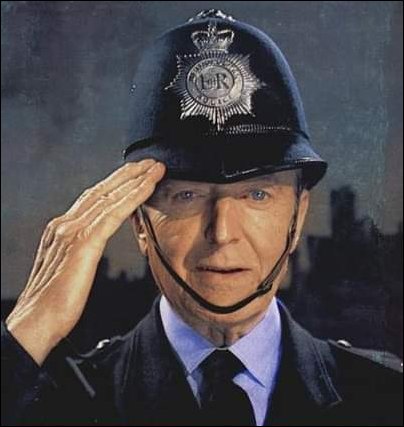
"That's all folks, see you in the next Issue"
Next PMCC Magazine: 1830hrs Friday 27th June 2025
|
|
©PMCC
➤